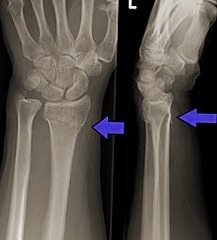How to Use Heloc to Buy Rental Property?
If you want to invest in rental property, you may consider various financing options. One option is using a Home Equity Line of Credit (HELOC) to buy a rental property. This article explores how to use HELOC to finance your rental property investment.
What is a Home Equity Line of Credit (HELOC)?
A Home Equity Line of Credit (HELOC) is a type of revolving credit that allows you to borrow against the equity in your home. The amount of credit available to you depends on the value of your home and the amount of equity you have built up. HELOCs typically have a variable interest rate and are secured by your home.
How can you use a HELOC to buy a rental property?
Using a HELOC to buy rental property involves borrowing against the equity in your home to finance the rental property purchase. Here’s how it works:
Step 1: Determine the amount of equity you have in your home
To determine the amount of equity you have in your home, you’ll need to subtract the amount you owe on your mortgage from the current value of your home. For example, if your home is worth $500,000 and you owe $300,000 on your mortgage, you have $200,000 in equity.
Step 2: Apply for a HELOC
Once you know how much equity you have in your home, you can apply for a HELOC. Your lender will review your credit score, income, and other financial information to determine your eligibility for a HELOC.
Step 3: Use the HELOC to finance your rental property investment
Once approved for a HELOC, you can use the funds to finance your rental property investment. You can use the HELOC to pay for the down payment, closing costs, and other expenses associated with buying the rental property.
Pros and Cons of Using a HELOC to Buy Rental Property
Using a HELOC to buy rental property has its advantages and disadvantages. Here are some pros and cons to consider:
Pros:
– Flexibility: With a HELOC, you can borrow only what you need when needed.
– Lower interest rates: HELOCs typically have lower rates than other loans, such as personal or credit cards.
– Tax benefits: Interest paid on a HELOC is tax-deductible if the funds are used for home improvements or to purchase, build, or improve your home.
Cons:
– Risk: Using your home as collateral for a HELOC means putting your home at risk if you cannot repay the loan.
– Variable interest rates: HELOCs typically have variable interest rates, which means your monthly payments can fluctuate over time.
– Potential for overborrowing: Because HELOCs are revolving credit lines, there’s a potential for overborrowing and accumulating high debt levels.
How do I use my HELOC?
A HELOC (home equity line of credit) is a loan that uses your home’s equity as collateral. Here are the main ways you can use a HELOC:
Home improvements – An everyday use of HELOCs is to fund renovations or repairs. Things like updating the kitchen, adding an addition, or replacing the roof.
Debt consolidation – Some people use HELOCs to pay off high-interest credit cards or personal loans. This can save on interest and simplify your finances.
Significant purchases – Some people tap into their HELOC to fund large purchases like vehicles, boats, or other recreational items. However, using a HELOC for depreciating assets is risky.
Investments – Some try using HELOC funds for investments, though this is risky. Your HELOC interest is typically not tax deductible, unlike a traditional loan.
Emergency funds – Some view their HELOC as a backup source of funds for emergencies or unexpected expenses when they have no other viable options. But this should be a last resort.
How to Buy Tax Lien Properties in Georgia?
What is the best way to pay off a HELOC?
There are a few good ways to pay off a HELOC:
Pay the minimum required payment: This is the safest approach but will cost you the most interest over time. Only do this if you can’t afford higher prices.
Make extra interest-only payments: If you have cash, make additional interest-only payments towards your HELOC. This will save you money on interest charges without reducing your principal balance.
Make lump sum principal payments: If you come into a lump sum of cash, consider putting some or all of it towards reducing your HELOC’s principal balance. This will save you the most interest over time.
Refinance into a fixed-rate loan: Once you have built up significant equity in your home, consider refinancing your HELOC into a fixed-rate home equity loan or second mortgage. This will give you a stable payment and a fixed interest rate.
Pay it off ultimately: If you have the cash on hand, fully pay off your HELOC balance in one payment. This will eliminate the debt and free up your home equity. However, it may be unwise to deplete your home equity fully.
How long does it take to get a HELOC?
The time it takes to get a HELOC (home equity line of credit) can vary considerably, depending on factors like:
• The lender – Some lenders have a faster approval process than others. Smaller banks and credit unions may be quicker.
• Underwriting requirements – Some lenders have more strict requirements for income, credit scores, debt-to-income ratios, and loan-to-value ratios. This can lengthen the approval process.
• Required documents – Gathering documents like tax returns, bank statements, pay stubs, and proof of home insurance can take time. Incomplete applications take longer to process.
• Appraisal – If an appraisal is required, scheduling the assessment can take 1-2 weeks. Then the lender has to review the check, which may add another week.
• Title search – Lenders typically conduct a title search to ensure no liens on the property. This may add another 1-2 weeks.
• Review and approval – Lenders must review your application and supporting documents. Internal approval processes can take several days to a few weeks.
All these factors mean the HELOC approval process could take as little as 1-2 weeks or up to 1-2 months, depending on the situation. To speed things up:
• Apply with an efficient lender (recommend getting multiple quotes)
• Gather all required documents ahead of time
• Check application status frequently and promptly provide any additional information requested
• Choose a lender that outsources appraisals and title searches to speed up that part of the process
FAQs
Q: What is the difference between a HELOC and a home equity loan?
A: A HELOC is a revolving line of credit, while a home equity loan is a lump sum loan. With a HELOC, you can borrow only what you need when needed. With a home equity loan, you receive a lump sum payment upfront and must make fixed monthly payments.
Q: Can I use a HELOC to buy multiple rental properties?
A: You can use a HELOC to buy multiple rental properties. However, remember that borrowing against your home equity comes with risks.
Q: What are the eligibility requirements for a HELOC?
A: Eligibility requirements for a HELOC vary by lender but typically include a good credit score, stable income, and equity in your home.
Conclusion
Using a HELOC to buy rental property can be a flexible and cost-effective financing option. However, weighing the pros and cons and understanding the risks is essential. If you decide to use a HELOC to finance your rental property investment, be sure to do your research and work with a reputable lender.













